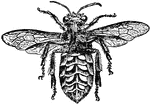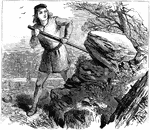Clipart tagged: ‘worker’

Red Wood Ant Worker's Head
Red Wood Ant worker's head. "Workers supply all the food and are the builders of their wonderful colonies."

Bee Abdomen
"Abdominal Plate (worker of Apis), under side, third segment. W, wax-yielding surface, covering true…
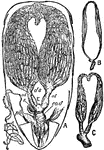
Bee Ovaries
"Ovaries of Queen and Workers (Apis). A, Abdomen of queen, under side. P, Petiole. o, o, Ovaries. hs,…
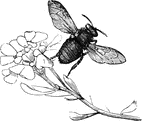
Drone Bee
"The working bee, for collecting wax, enters a flower, the stamens of which are loaded with pollen.…

Drone Bee
"Bee is the common name given to a large family of hymenopterous or membranous-winged insects, of which…

Honey Bee (Worker)
Honey bees (or honeybees) are a subset of bees, primarily distinguished by the production and storage…
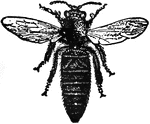
Queen Bee
"Bee is the common name given to a large family of hymenopterous or membranous-winged insects, of which…

Worker Bee
"Bee is the common name given to a large family of hymenopterous or membranous-winged insects, of which…

Field Hand
An illustration of an African American slave who is employed as a field hand, notice the basket balancing…

Flagger, Black and White
The Flagger symbol sign should be used in advance of any point where a flagger is stationed to control…

Flagger, Color
The Flagger symbol sign should be used in advance of any point where a flagger is stationed to control…

Flagger, Outline
The Flagger symbol sign should be used in advance of any point where a flagger is stationed to control…

Flagger, Silhouette
The Flagger symbol sign should be used in advance of any point where a flagger is stationed to control…

The Parable of the Householder Hiring Laborers to Work in the Vineyard
"For the kingdom of heaven is like unto a man that was a householder, who went out early in the morning…

Royal Cells
"Bee is the common name given to a large family of hymenopterous or membranous-winged insects, of which…


